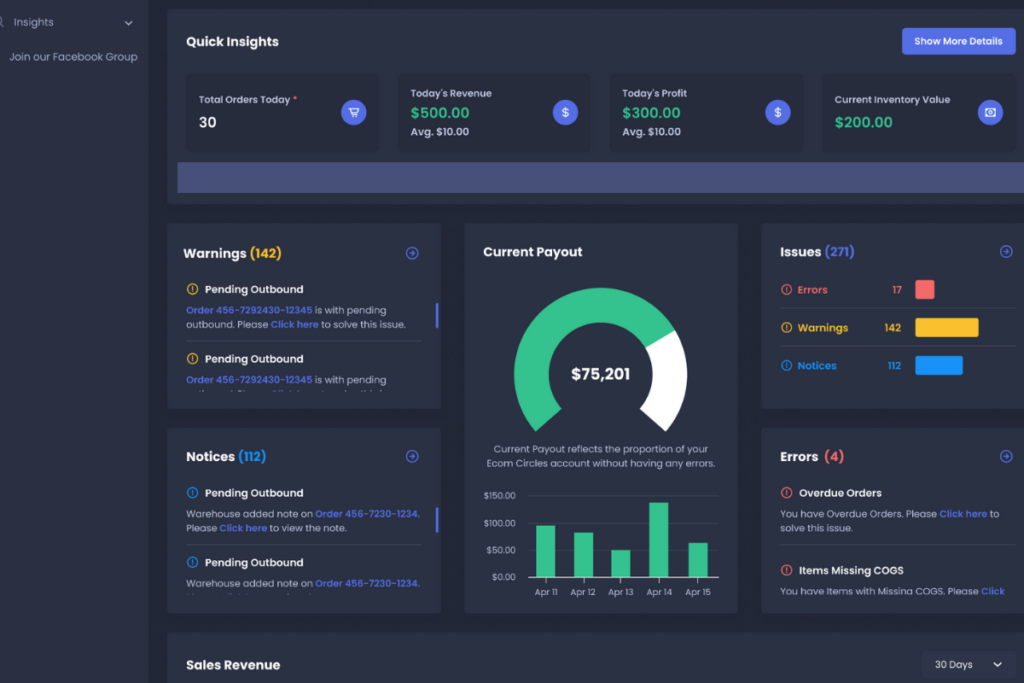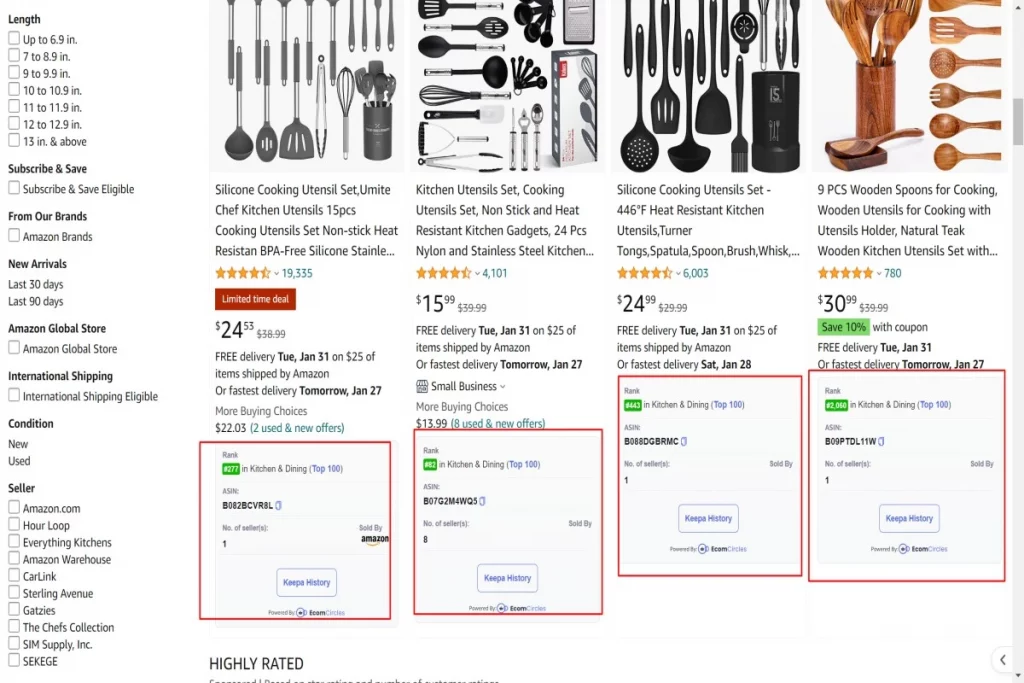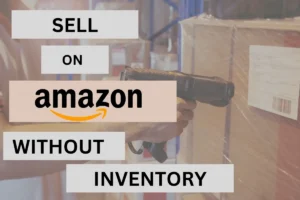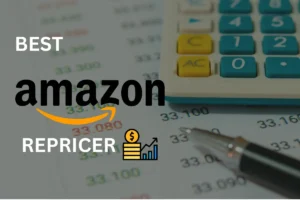Are you trying to figure out how to succeed in Amazon Online Arbitrage (OA) in 2025? Do the constant updates to Amazon’s rules and algorithms make it hard for you to know what to do next? If you’re selling on Amazon, these are probably some of the big questions on your mind.
Selling on Amazon is not just about buying for less and selling for more. It’s about knowing the market well. You might be asking: How can I keep up? What strategies will actually work now for online arbitrage on Amazon?
As an Amazon FBA online arbitrage seller, it’s important to stay up-to-date and flexible. This year, selling successfully means being smarter and more strategic.
Top 8 Tips for Online Arbitrage Amazon Success
Here are 8 tips to help you succeed in Amazon online arbitrage:
Tip 1: Market Research Strategies
Effective market research is the cornerstone of success in Amazon Online Arbitrage, especially in 2025. To stay ahead, it’s crucial to understand customer preferences and keep an eye on the competition. Here’s how you can excel in market research:
Start by exploring Amazon’s Best Sellers lists. These lists are valuable for identifying trending products and niches. Regular monitoring can help you spot opportunities to offer similar or complementary items that are currently in demand for online arbitrage on Amazon.
Next, competitor research is indispensable. Keeping a close watch on your competitors is key, especially if you are selling in highly competitive niches.
Observe your competitor’s top-selling products and pricing strategies and employ tools that track changes in prices, sales volumes, and customer reviews. This information is vital for staying competitive and adapting your strategy. A useful tool for your Amazon online arbitrage is the Ecom Circles Extension. This tool is incredibly useful for understanding competitor trends in online arbitrage on Amazon.
Tip 2: Optimizing Product Listings
In Amazon online arbitrage, the way you present your products can make a significant difference in attracting and converting customers. Effective optimization of your product listings is essential for success. Here’s how to ensure your listings stand out in 2025:
Start with your product titles. They’re the first thing a customer sees. Your title should be clear and engaging and include key search terms that buyers might use.
It’s important to strike a balance here: include relevant keywords but avoid stuffing the title with them. The goal is to make it easy and appealing for customers to click on your product.
Next, focus on the images. The visual presentation of your product is crucial. Use high-resolution images that show your product from different angles. Adhering to Amazon’s image guidelines is key, but don’t stop there.
Incorporate lifestyle images that show your product being used. This not only adds to the aesthetic appeal but also helps customers visualize the product in their own lives.
The product description is where you can really sell your item. Provide detailed, informative descriptions that outline the features and benefits.
How does your product solve a problem or fulfill a need? Use bullet points for clarity and include keywords naturally within the text. This not only aids in search but also helps customers understand why they need your product.
Tip 3: Effective Pricing Tactics
Mastering the art of pricing on Amazon FBA online arbitrage is essential for maximizing profits while staying competitive. This means adopting a mix of well-informed and flexible pricing strategies.
Tools like Keepa and CamelCamelCamel are invaluable for tracking the price history of products similar to yours. This data helps you understand market pricing trends and set prices that are competitive yet profitable.
Dynamic pricing is another tactic to consider. Utilizing tools that automatically adjust your prices based on market conditions, competition, and demand can keep you competitive. This strategy saves you the time and effort of constantly monitoring and manually changing prices.
Psychological pricing is a subtle yet effective technique. Setting prices just below a round number, like pricing a product at $19.99 instead of $20, can psychologically appear much more affordable to customers, potentially boosting sales.
Tip 4: Leverage Amazon’s FBA Program
Using Amazon’s Fulfillment by Amazon (FBA) program can be a game-changer for your Amazon FBA online arbitrage business. FBA takes care of the heavy lifting of storage, packing, shipping, and customer service, which can be a major advantage.
Firstly, get to grips with the benefits of FBA. Its main appeal is how it handles the logistics of selling on Amazon, freeing up your time to focus on other aspects of your business. Moreover, customers often prefer buying FBA products due to Amazon’s trusted customer service and quick delivery.
However, it’s important to weigh the costs against the benefits. FBA comes with fees, and it’s crucial to determine whether these are outweighed by the benefits of each of your products.
Some items, particularly those that are lightweight, non-fragile, and have steady sales, might be ideal for FBA, while others may not be as cost-effective.
Tip 5: Managing Inventory Efficiently
Effective inventory management is a critical aspect of success in Amazon online arbitrage in 2025. With increasing competition and customer expectations, managing your inventory efficiently can help meet demand, reduce storage costs, and maximize profits.
Start by regularly analyzing demand patterns. This involves looking at your sales data to identify trends, seasonal peaks, and customer preferences. Such analysis allows you to forecast demand accurately and make informed decisions about how much stock to keep.
Adopting a Just-in-Time (JIT) inventory management strategy can be highly beneficial. This approach means keeping just enough stock to meet demand, minimizing storage costs, and reducing the risk of having unsold inventory. It requires precise planning and forecasting but can lead to significant cost savings.
Diversifying your suppliers is also key. Relying on a single supplier can leave you vulnerable to supply disruptions. By having multiple suppliers, you can mitigate these risks and ensure a more consistent product flow.
It’s important to monitor and adjust your inventory levels regularly. The market can change quickly, and staying agile with your inventory management is necessary to keep up with these changes. This might mean increasing stock for trending products or reducing it for those that are less popular.
Tip 6: Utilize Amazon SEO
To thrive in Amazon FBA online arbitrage in 2025, a strong understanding of Amazon SEO (Search Engine Optimization) is essential. Knowing how to align your listings with Amazon’s search algorithm can greatly increase your product’s visibility and sales.
Start with thorough keyword research. It’s critical to find high-traffic, relevant keywords for your products. Tools like Helium 10, Google Keywords Planner, or Ahrefs are invaluable for this purpose. Once you have your keywords, integrate them strategically into your product titles, descriptions, and backend search terms.
Your product title is a vital component of Amazon SEO. It should be concise, clear, and contain your most important keywords. Amazon places significant emphasis on titles for ranking, so ensure your title accurately describes your product and includes terms your potential customers are searching for.
Reviews play a crucial role in Amazon’s SEO. Products with more positive reviews often rank higher. Encourage your satisfied customers to leave reviews and make sure to respond to them. This not only shows that you value customer feedback but also helps in boosting your SEO.
Since many Amazon customers use mobile devices, it’s important to ensure your listings are optimized for mobile. This means having clear titles, high-quality images, and descriptions that are easily readable on smaller screens.
Tip 7: Leverage Backend Keywords in Amazon Listings
Backend keywords are a key element in Amazon online arbitrage that can significantly boost your product’s visibility.
These are the keywords you add to the backend of your Amazon product listings, invisible to customers but essential for Amazon’s search algorithm. Understanding and effectively using backend keywords can give your products a significant edge in search rankings.
Amazon’s search algorithm uses these backend keywords to index products for search queries. When a customer searches for something on Amazon, the algorithm scans both the visible and hidden content of listings to determine their relevance.
This means backend keywords can expand the range of search queries your product appears in, increasing its visibility without cluttering the visible listing.
To effectively use backend keywords, start with comprehensive keyword research. Identify relevant terms that customers are likely to use but haven’t been included in your visible listing for your online arbitrage Amazon.
Ensure the keywords are directly related to your product; irrelevant keywords can detract from the user experience and harm your product’s ranking.
It’s important not to repeat keywords that are already in your product title or bullet points. Backend keywords should complement, not duplicate, your visible content. Including synonyms, abbreviations, and alternate names for your product can also help cover a broader range of customer searches.
Be mindful of Amazon’s character limit for backend keywords, typically around 250 characters. This limit requires you to be selective and strategic about the keywords you choose.
Regularly updating your backend keywords in response to changing market trends and search behaviors can also help maintain your product’s relevance and visibility.
Tip 8: Use Ecom Circles Tools
For Amazon online arbitrage sellers, integrating advanced online arbitrage tools such as those provided by Ecom Circles can significantly streamline business processes and enhance profitability.
Ecom Circles offers a suite of online arbitrage tools, including automated dropshipping software and a Chrome extension, each designed to facilitate different aspects of the Amazon online arbitrage selling process.
The automated dropshipping software from Ecom Circles is a powerful tool that can transform the way you handle your Amazon business. It typically includes features like automated order fulfillment, which significantly reduces the time and effort you need to process sales.

Its inventory management capabilities ensure that you maintain optimal stock levels, adapting swiftly to changes in demand.
Additionally, its ability to integrate with multiple suppliers means you can diversify your product range and have backup options, mitigating supply chain disruptions.
The Amazon Seller Extension offered by Ecom Circles is another invaluable resource. It can provide instant insights into market trends and competitor performance, all within your browser, making market research more efficient and accessible.

This tool is particularly useful in sourcing profitable products, as it allows for easy comparison of prices across different platforms, helping you identify lucrative arbitrage opportunities.
The convenience and efficiency this extension brings can save a considerable amount of time, allowing you to focus more on strategic business growth.
Incorporating these tools into your business strategy can lead to several benefits. They help streamline your operational processes, reducing the manual workload and freeing up time for focusing on areas like market expansion and customer engagement.
Incorporating these online arbitrage tools into your business strategy can lead to several benefits. The real-time data and analytics provided by these tools support data-driven decision-making, enabling you to respond quickly to market trends and customer preferences.
You can get started with the Ecom Circles Automated automation services and Extension and enjoy your first 14 days for free. This gives you the time to try it out before you commit to it. No credit card required! We are sure you’ll continue your subscription when the trial period is up!
Frequently Asked Questions
1. What is Amazon online arbitrage?
Amazon online arbitrage is a business model where sellers find products at a lower price on one online platform and resell them on Amazon for a profit. Sellers don’t handle physical inventory but instead rely on online research to find profitable items.
2. How can I succeed in Amazon online arbitrage?
To succeed in Amazon online arbitrage, it’s essential to conduct thorough market research, optimize your product listings, and use online arbitrage tools to stay competitive. Keeping up with Amazon’s rules and trends is also crucial for success.
3. What are the best online arbitrage tools for Amazon sellers?
Some of the best online arbitrage tools include Keepa, CamelCamelCamel, and Helium 10. These tools help sellers track Amazon online arbitrage opportunities by monitoring product prices, sales ranks, and profitability.
4. How does Amazon FBA help with online arbitrage?
Amazon FBA online arbitrage allows sellers to store their products in Amazon’s warehouses, where Amazon takes care of shipping, customer service, and returns. This makes online arbitrage on Amazon easier by freeing up sellers to focus on product sourcing and listing optimization.
5. Is online arbitrage on Amazon profitable?
Yes, online arbitrage on Amazon can be highly profitable when done correctly. Success depends on proper product research, competitive pricing strategies, and the effective use of online arbitrage tools to stay ahead of the competition.






